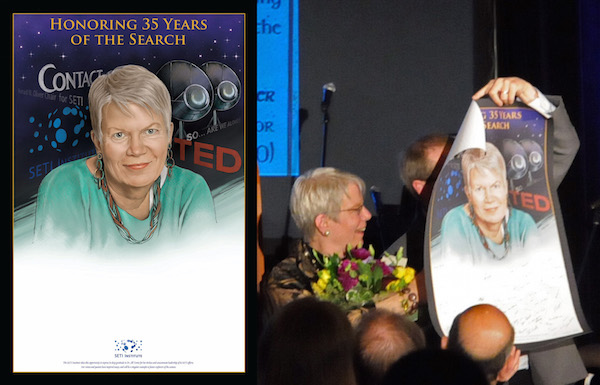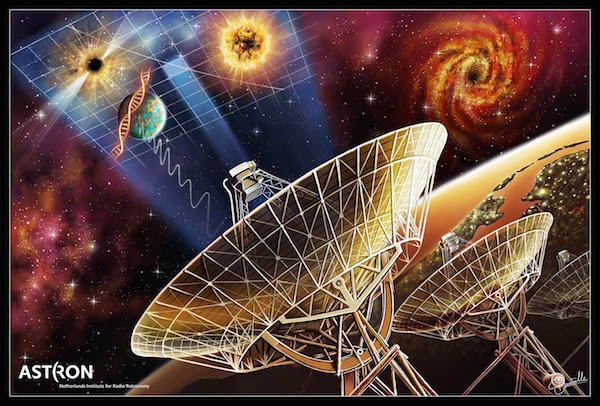- Published: Tuesday, June 16 2015 01:15

Illustration Artist Impression of Kepler 62f - Created for Franck Marchis Science Outreach Manager and Senior Planetary Manager at the SETI Institute.
For the discovery of the Kepler 62 system i illustrated an Artist Impression, as seen from Kepler 62f. Two of the planets (e and f) in the system are Super-Earths and were targets for the SETI search. Both planets are within the Goldilocks zones of their star and would likely be engulfed in water, which could lead to life that is very different than our own.

Illustration of Jill Tarter, to Honour her for her 35 years of SETI search - In collaboration with the SETI Institute
In 2012, at SETIcon II, Jill Tarter was Honoured for her 35 years of SETI Search. Jill, who was the inspiration for the character “Ellie Arroway” in the novel and movie “Contact” by Carl Sagan, retired after 35 years of searching for ET to continue to work as a fundraiser for the SETI Institute. On the photo next to the illustration you can see her successor Gary Harp showing the illustration as a gift from the entire Institute and me, signed by all her colleagues.

Illustration of ASTRON APERTIF - Created for Michael Garrett, General Director & Scientific Director ASTRON
This illustration was created for the ASTRON (Netherlands Institute for Radio Astronomy). It depicts APERTIF, which is a new type of array receiver system. There are about 100 receivers in each APERTIF system instead of the one receiver that sits at the focus of the dish now. The result is that when APERTIF is deployed, the dish sees an area of sky that is 30 times bigger than what it sees now, which means they can survey the sky 30 times faster (!!) with the APERTIF system.

Illustration for the Planetary Lake Lander Project - Created for Nathalie Cabrol, Senior Research Scientist at the SETI Institute and NASA AMES research center
An Artistic impression of the Planetary Lake Lander Project. A project that “is deploying and remotely operating a lake lander to gain operational experience that will help us better understand the technology and payload necessary, possible system constraints, and to develop solutions to overcome design issues for future lake lander missions.”
- Beautiful art, but I can't resist pointing out that the phase of the very Saturn-like planet is wrong, if that is its sun in the sky (and if not, what?)! It is probable that, like Saturn and Titan (which this resembles), the planet will be in the plane of the primary's equator. Also, the dark side of a planet or moon cannot be darker than the sky -- otherwise it must be _inside_ the atmosphere, which draws a veil over the black of space. Astronomical art needs to be accurate, regardless of media and style -- especially if painted for an organisation like SETI, which presumably consists of astronomers who know the scientific facts. . .
- Hi David. Thank you for pointing that out. I however like to add that this artwork was not at all meant to represent reality. As i pointed out in my first blog the artist impressions i have created of discoveries have been as truthful as possible. This was not such a project, this was meant as art which was merely fantasy and not an impression of a real situation. No doubt that what you write is true, but on top of that i was told that Titan is covered with gasses wit minimal visibility, so realistically there wouldn't have been a lot to see at all.
- Exactly! (Please see my own AstroArtist blogs here). I can see that you have done more accurate art, which I like, but I do feel that things like the angle of light should be a constant in all representational art. . . Thanks for your reply, and best wishes.







 David A. Hardy
David A. Hardy Danielle Futselaar
Danielle Futselaar
Comments